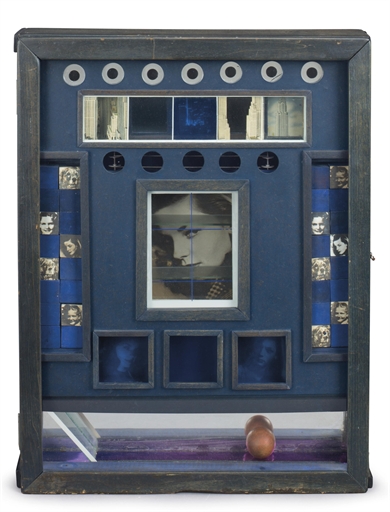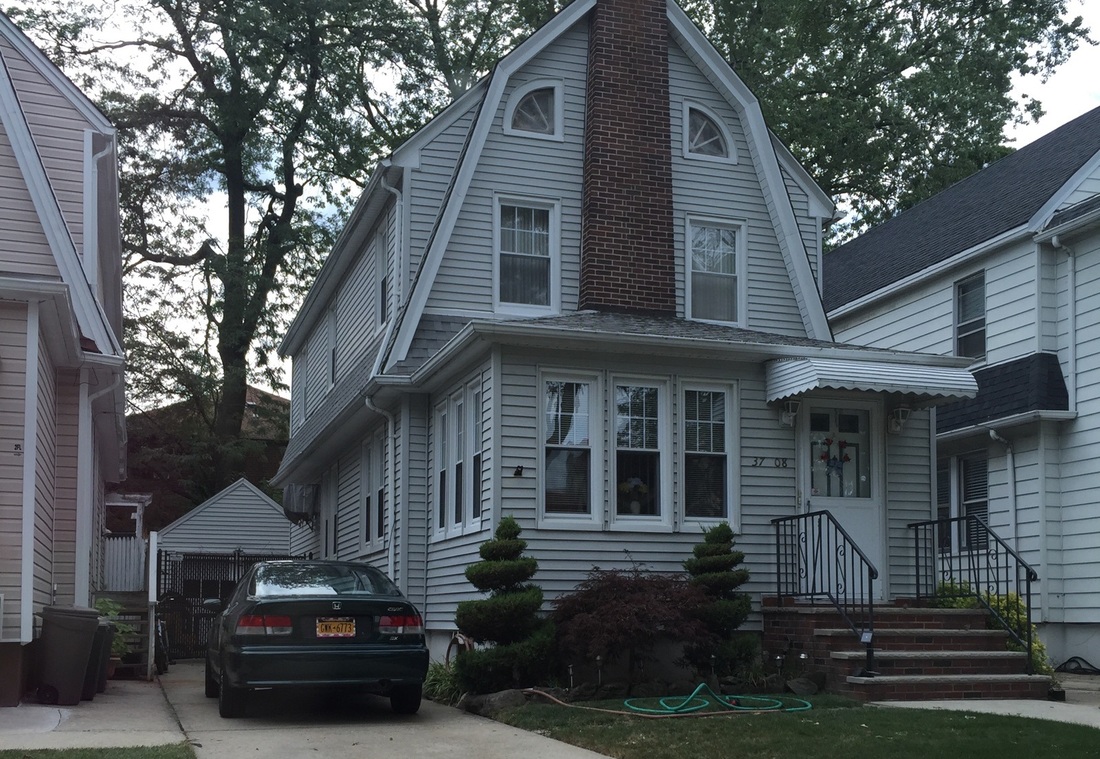 Lauren Bacall loved this box. She told Cornell's biographer, "I wish I had it." Lauren Bacall loved this box. She told Cornell's biographer, "I wish I had it." Joseph Cornell was already well known for his collages in small boxes during the mid-50’s when I was in high school. Our busy road (188th St.) dead-ends into Utopia Parkway just south of Cornell’s home, maybe three miles from my childhood home, but I don’t remember my cultured friends and teachers ever mentioning him. The Jamaica High School paper interviewed famous New York people and probably could have gained an interview with this introverted soul but, like me, the editors had not discovered him. I am thinking about Cornell because my daughter Laura just took his biography – “Utopia Parkway: The Life and Work of Joseph Cornell,” by Deborah Solomon -- out of the library. It’s been around since 1997 yet it took me this long to read about this artist who lived with his widowed mother and his younger brother who was limited by cerebral palsy. Cornell is stereotyped as the hermit who stayed home on Utopia Parkway, caring for his mother and brother, and when the world quieted down at night he would snip others’ work and blend them with memorabilia of France, or incongruous mundane objects to create new form. I once met Louise Nevelson at a party. She made us roar by describing how she bellied into a dumpster to retrieve some artifact she could use in her sculpture. Cornell was no less driven. Somehow, he managed to work at menial jobs in the city, to support his family, while haunting the art galleries and bookstores at lunch hour and then take the train back to Flushing. People called him a a recluse but really he was a Zelig of an Outer Borough who knew Dali and Duchamp and de Kooning. Tony Curtis came to his house in a limo! Cornell sought out ballerinas and actresses, shopgirls and students. Audrey Hepburn sent back one of his boxes. Susan Sontag enjoyed his company. His work celebrates sensuality, small hotels in Paris, birds, mystery, beautiful women. He died in 1972 at the age of 69. The author informs us that his short, intense crushes were "platonic." I liked Cornell even better when I read that he loved the haunting music of Erik Satie, who lived in a squalid little flat in the outback of Paris. Cornell's boxes and Satie's compositions are a perfect fit. I have loved Cornell's work since my wife, an artist, introduced me to museums and galleries. Maybe I am particularly affected because I grew up in Queens, in a narrow house much like Cornell's. Next door, a few feet away, two brothers, waiters named Rocco and Luigi, practiced the scales and the arias on summer afternoons with the windows open, before going to work. In Queens, we knew that “it” was just a subway ride away. And all that time, maybe three miles up the road, Joseph Cornell was caring for his family and making his boxes.
Ed Martin
8/11/2015 03:42:56 pm
How wonderfully you brought his life into focus. Your takes on American Popular Culture and humanity are always a special pleasure.
George Vecsey
8/12/2015 01:49:49 am
Ed, thanks so much. GV
Brian Savin
8/13/2015 04:57:48 am
Thanks for this. I learned something interesting today here at the beach; saved me from being a complete lizard. I see that Cornell was born in Nyack not too many years away from Edward Hopper. Both interesting with strange art tendencies. Must be something in the water there.
George Vecsey
8/13/2015 11:03:30 am
Brian, there is a connection. The author, a critic as well as biographer, links Hopper and Cornell their art. Hopper was living in NYC when Cornell was young but came up to Nyack to teach children -- including a sister of Cornell's (he had two; both later married.) Cornell was not pointed toward art -- or anything -- as a young man, and probably did not meet Hopper.Both men loved small hotels and the edges of things. Thanks for reading. GV Comments are closed.
|
Categories
All
|










